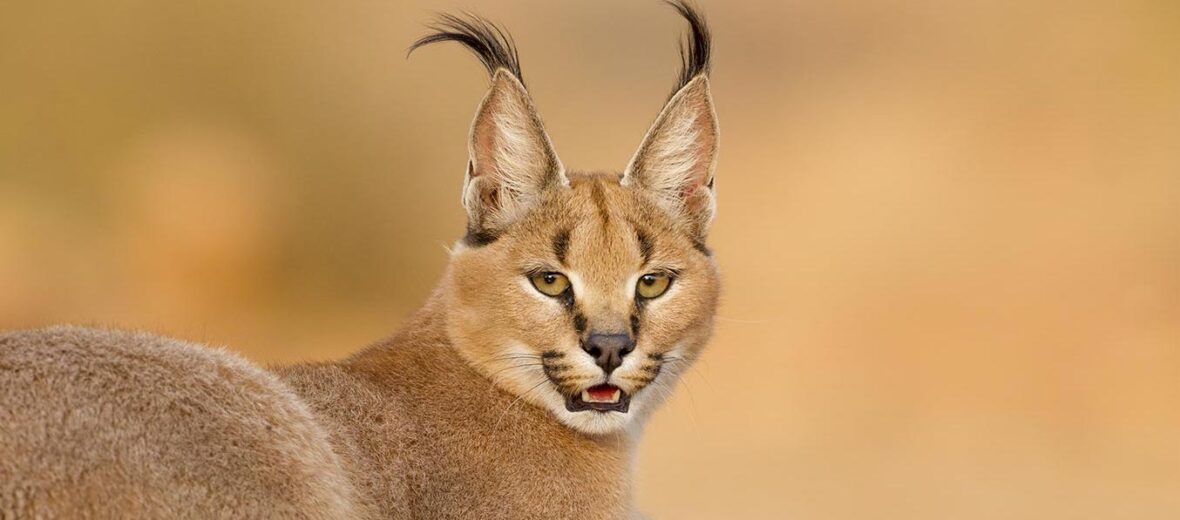
Often called the desert lynx, the caracal is not actually related to that species of big cat. Their name actually comes from the Turkish word “karakulak” meaning “black ear.” Back in the day, these cats were trained to hunt birds. The very phrase, “To put a cat amongst the pigeons” is in reference to when they used to be put into cages of birds and bets were placed as to how many birds could be killed by the caracal. These cats can be found in southwestern Asia, the Middle East, and Africa. They prefer dry regions, arid regions, scrublands, savannas, woodlands, evergreen and mountain forests. The Mediterranean caracals are listed as Near Threatened by the IUCN, due to hunting and habitat loss. All other regions are listed as Least Concern.
First the Stats…
Scientific name: Caracal caracal
Weight: Up to 26 lbs.
Length: Up to 2.4 feet
Lifespan: Up to 17 years
Now on to the Facts!
1.) Caracals have a superb sense of hearing. They use a series of 20 muscles in each ear to rotate their ears towards even the slightest sound.
2.) They are primarily nocturnal (active at night). But can be seen exhibiting diurnal (active during the day) behaviors in undisturbed areas.
3.) These cats are primarily terrestrial (spend the lives on the ground) but can also climb trees with the best of them.
4.) The caracal is a carnivore (eats meat) that preys on mice, rats, hares, rabbits, hyraxes, mongooses, antelopes, impala, kudu, and birds.
5.) Left over meals are often stored in trees.
But wait, there’s more on the caracal!
6.) Like other cats, the caracal is unable to digest fur. So they will scratch and claw the skin and fur to get at the tasty meat and organs inside the carcass.
7.) They communicate via hisses, meows, purrs, calls, snarls, spits, and growls.
Did you know…?
Caracals can run up to 50 mph! They are able to outrun most antelopes and ostriches. These amazing cats can also jump up to 16 feet in the air, killing as many as 10 – 12 birds in a single jump!
8.) Only wild dogs, dholes, and larger cats prey on them. Humans also hunt them for bush meat and their fur. They are also killed to protect livestock.
9.) Due to their ability to get most of their water needs from the foods they eat, they don’t have much need for drinking standing water.
10.) A caracal will aggressively defend their territory. They are solitary and only come together to mate.
But wait, there’s still more on the caracal!
11.) Females mate each year and produce a litter of 2 – 4 kittens.
12.) Males do not participate in the rearing of their young.
Now a Short Caracal Video!
Also, check out the Critter Science YouTube channel. Videos added frequently!
Want to suggest a critter for me to write about? Let me know here.




Leave a Reply